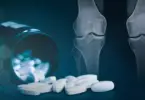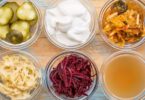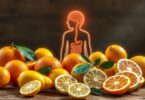By Sayer Ji
Contributing writer for Wake Up World
Could a treat as luxurious as a sauna really be good for your health? It sounds too good to be true, but this is one instance where you can indulge guilt-free because sauna bathing is an excellent addition to your healthy lifestyle. Enjoyed for thousands of years in Finland for both pleasure and relaxation, modern research shows sauna usage is beneficial for circulation, heart health, immune system function and more.[i]
[pro_ad_display_adzone id=”110028″]
The temperatures in a sauna typically range from 113 °F to 212 °F (45 °C to 100 °C), and it’s this short-term, intermittent exposure to heat that yields so many benefits to human health. Since ancient times, people have been “bathing” in heat for cleansing and healing purposes.
The practice induces mild hyperthermia, and this temporary heat stress increases your body’s core temperature, leading to a thermoregulatory response that ultimately helps restore homeostasis while strengthening your body against future stressors.[ii]
Using a Sauna May Extend Your Healthspan
Healthspan refers to the number of years in your life that you’re healthy, and sauna bathing may help extend it.[iii] When your body is exposed to the heat stress of a sauna, it activates the expression of beneficial heat shock proteins (HSPs), which promote the regrowth of muscle[iv] and are associated with human longevity.[v]
HSPs play a role in immune function, cell signaling and cell-cycle regulation, while also promoting proteome homeostasis, the loss of which is a hallmark of aging.[vi] Sauna usage is also beneficial because it, like exercise, induces hormesis — a term that describes the positive effects of short exposures to environmental stressors.
Large, population-based cohort studies have shown that sauna usage reduces morbidity and mortality in a dose-dependent manner, meaning the more subjects used a sauna, the lower their risk of mortality became.[vii]
For instance, men who used a sauna two to three times per week had a 27% lower risk of cardiovascular disease than men who only used it once a week, while those who enjoyed a sauna four to seven times per week lowered their risk of cardiovascular disease by 50%. Even the risk of all-cause mortality declined by 40% among frequent sauna users, compared to infrequent users.[viii]
Frequent sauna baths may also reduce the risk of both acute and chronic respiratory diseases[ix] while lowering blood pressure.[x] Sauna baths lead to a significant increase in nitric oxide metabolites, with researchers suggesting that this increased production of nitric oxide may lead to improved vascular relaxation and blood flow.[xi]
Other research supports these findings, showing a 46% lower risk of high blood pressure among men who used a sauna four to seven times per week, and a 24% lower risk among those who used a sauna two to three times weekly.
Even one sauna session is enough to lower blood pressure, with the benefit extending at least 30 minutes afterward, leading researchers to suggest, “As such, sauna use may serve as a non-pharmacological means to address, or even prevent, hypertension.”[xii]
Overall, sauna therapy may be useful for at least 29 conditions, while regular sauna users may enjoy:[xiii]
|
Reductions in oxidative stress and inflammation |
Beneficial modulation of the autonomic nervous system |
|
Improved lipid profile |
Improvements to the cardiorespiratory system |
|
Lower risk of pulmonary diseases |
Improvements in headaches and flu |
|
Improvements in arthritis |
Enhanced detoxification, including removal of toxic elements from the body[xiv] |
Antiaging and Brain-Boosting Potential
Relaxing in a sauna has the added benefit of protecting brain health, also in a dose-dependent manner. Among men who used a sauna four to seven times per week, the risk of dementia decreased by 66% — and the risk of Alzheimer’s disease by 65% — compared to men who used a sauna just once a week.
Mental health benefits are also apparent, with frequent sauna users (four to seven times per week) experiencing a 77% reduced risk of developing psychotic disorders.[xv] In terms of healthy aging, markers of inflammation are known to increase as you get older, but sauna usage helps reduce inflammation, including lowering levels of C-reactive protein.[xvi]
The heat stress from sauna usage also increases the expression of brain-derived neurotrophic factor, which promotes the growth of new neurons.[xvii] A review in Experimental Gerontology highlighted many additional benefits of regular or frequent sauna use, which include protection against:[xviii]
|
Cardiovascular disease |
|
|
Sarcopenia |
Age-related impairments |
|
Metabolic dysfunction |
Immunological decline |
|
Sudden cardiac death |
Coronary artery disease |
Saunas Mimic Some of the Effects of Exercise
While sitting in a sauna can’t give you every single benefit that a bout of vigorous exercise can, it does mimic many of the beneficial physiological and protective responses that occur. According to the Experimental Gerontology review:
“Interestingly, many of the physiological responses to sauna use … are remarkably similar to those experienced during moderate- to vigorous-intensity aerobic exercise, and sauna use has been proposed as an alternative to aerobic exercise for people who are unable to engage in physical activity due to chronic disease or physical limitations.”
In a comparison of 45 minutes of infrared sauna use or 45 minutes of indoor bicycling among healthy women, similar responses were seen for blood pressure, arterial stiffness — a biomarker of vascular aging — and heart rate variability, higher levels of which are associated with a greater capacity of the cardiovascular system to respond to stress.[xix]
In another example, which compared a 25-minute sauna session to an exercise session, researchers concluded the acute heat exposure was comparable to moderate physical exercise, and the resulting sustained decrease in blood pressure that occurred after sauna usage “suggests that the sauna bath will have a beneficial effect on the cardiovascular system.”[xx]
Ideally, however, rather than replacing exercise with sauna usage, your best bet may be to enjoy a sauna after you exercise. The combination of both regular exercise and frequent sauna bathing has even more health benefits — and more protection against mortality risk — than either exercise or sauna usage alone.[xxi]
References:
[i] Mayo Clin Proc. 2018 Aug;93(8):1111-1121. doi: 10.1016/j.mayocp.2018.04.008. https://pubmed.ncbi.nlm.nih.gov/30077204/
[ii] Experimental Gerontology October 15, 2021, Voume 154, 111509 https://www.sciencedirect.com/science/article/pii/S0531556521002916
[iii] Experimental Gerontology October 15, 2021, Voume 154, 111509 https://www.sciencedirect.com/science/article/pii/S0531556521002916
[iv] J Appl Physiol (1985). 2007 Apr;102(4):1702-7. Epub 2006 Nov 16.
[v] Experimental Gerontology October 15, 2021, Voume 154, 111509 https://www.sciencedirect.com/science/article/pii/S0531556521002916
[vi] Experimental Gerontology October 15, 2021, Voume 154, 111509 https://www.sciencedirect.com/science/article/pii/S0531556521002916
[vii] Experimental Gerontology October 15, 2021, Voume 154, 111509 https://www.sciencedirect.com/science/article/pii/S0531556521002916
[viii] Experimental Gerontology October 15, 2021, Voume 154, 111509 https://www.sciencedirect.com/science/article/pii/S0531556521002916
[ix] Eur J Epidemiol. 2017 Dec;32(12):1107-1111. doi: 10.1007/s10654-017-0311-6. Epub 2017 Sep 13. https://pubmed.ncbi.nlm.nih.gov/28905164/
[x] Health Sci Rep. 2021 Dec; 4(4): e393. https://www.ncbi.nlm.nih.gov/labs/pmc/articles/PMC8485612/
[xi] Int J Occup Med Environ Health. 2020 Mar 13 ;33(2):173-185. Epub 2020 Jan 16. PMID: 31950931
[xii] Experimental Gerontology October 15, 2021, Voume 154, 111509 https://www.sciencedirect.com/science/article/pii/S0531556521002916
[xiii] Mayo Clin Proc. 2018 Aug;93(8):1111-1121. doi: 10.1016/j.mayocp.2018.04.008. https://pubmed.ncbi.nlm.nih.gov/30077204/
[xiv] Altern Med Rev. 2011 Sep;16(3):215-25. https://pubmed.ncbi.nlm.nih.gov/21951023/
[xv] Experimental Gerontology October 15, 2021, Voume 154, 111509 https://www.sciencedirect.com/science/article/pii/S0531556521002916
[xvi] Experimental Gerontology October 15, 2021, Voume 154, 111509 https://www.sciencedirect.com/science/article/pii/S0531556521002916
[xvii] Experimental Gerontology October 15, 2021, Voume 154, 111509 https://www.sciencedirect.com/science/article/pii/S0531556521002916
[xviii] Experimental Gerontology October 15, 2021, Voume 154, 111509 https://www.sciencedirect.com/science/article/pii/S0531556521002916
[xix] Complementary Therapies in Medicine March 2022, Volume 64, 102798 https://www.sciencedirect.com/science/article/pii/S0965229921001394?via%3Dihub
[xx] Complementary Therapies in Medicine June 2019, Volume 44, Pages 218-222 https://www.sciencedirect.com/science/article/abs/pii/S096522991930473X?via%3Dihub
[xxi] Annals of Medicine 2018 Volume 50, Issue 2 https://www.tandfonline.com/doi/full/10.1080/07853890.2017.1387927
Sources and References:
- [i] Johns Hopkins Medicine, Health, Conditions and Diseases, Common Cold, https://www.hopkinsmedicine.org/health/conditions-and-diseases/common-cold. Accessed 15 Dec 2021.
- [ii] Johns Hopkins Medicine, Health, Conditions and Diseases, Common Cold, https://www.hopkinsmedicine.org/health/conditions-and-diseases/common-cold. Accessed 15 Dec 2021.
- [iii] CDC.gov, Influenza (Flu), https://www.cdc.gov/flu/symptoms/coldflu.htm. Accessed 15 Dec 2021.
- [iv] CDC.gov, Influenza (Flu), https://www.cdc.gov/flu/symptoms/coldflu.htm. Accessed 15 Dec 2021.
- [v] CDC.gov, Influenza (Flu), https://www.cdc.gov/flu/symptoms/coldflu.htm. Accessed 15 Dec 2021.
- [vi] CDC.gov, Influenza (Flu), https://www.cdc.gov/flu/symptoms/coldflu.htm. Accessed 15 Dec 2021.
- [vii] Johns Hopkins Medicine, Health, Conditions and Diseases, Common Cold, https://www.hopkinsmedicine.org/health/conditions-and-diseases/common-cold. Accessed 15 Dec 2021.
- [viii] Cochrane Database Syst Rev. 2000;(2):CD000530. doi: 10.1002/14651858.CD000530. Update in: Cochrane Database Syst Rev. 2006;(1):CD000530. PMID: 10796553. https://pubmed.ncbi.nlm.nih.gov/10796553/
- [ix] Cochrane Database Syst Rev. 2000;(2):CD000530. doi: 10.1002/14651858.CD000530. PMID: 10796553. https://pubmed.ncbi.nlm.nih.gov/10796553/
- [x] Cochrane Database Syst Rev. 2000;(2):CD000530. doi: 10.1002/14651858.CD000530. Update in: Cochrane Database Syst Rev. 2006;(1):CD000530. PMID: 10796553. https://pubmed.ncbi.nlm.nih.gov/10796553/
- [xi] Clin Ther. 2006 Feb;28(2):174-83. doi: 10.1016/j.clinthera.2006.02.001. PMID: 16678640. https://pubmed.ncbi.nlm.nih.gov/16678640/
- [xii] Biomed Res Int. 2018 ;2018:1837634. Epub 2018 Jul 5. PMID: 30069463. https://pubmed.ncbi.nlm.nih.gov/30069463/
- [xiii] Med Monatsschr Pharm. 2009 Feb;32(2):49-54; quiz 55-6. German. PMID: 19263912. https://pubmed.ncbi.nlm.nih.gov/19263912/
- [xiv] Med Monatsschr Pharm. 2009 Feb;32(2):49-54; quiz 55-6. German. PMID: 19263912. https://pubmed.ncbi.nlm.nih.gov/19263912/
- [xv] J Int Med Res. 2012;40(1):28-42. doi: 10.1177/147323001204000104. PMID: 22429343. https://pubmed.ncbi.nlm.nih.gov/22429343/
- [xvi] J Int Med Res. 2012;40(1):28-42. doi: 10.1177/147323001204000104. PMID: 22429343. https://pubmed.ncbi.nlm.nih.gov/22429343/
- [xvii] Complement Ther Med. 2019 Feb;42:361-365. doi: 10.1016/j.ctim.2018.12.004. Epub 2018 Dec 18. PMID: 30670267. https://pubmed.ncbi.nlm.nih.gov/30670267/
- [xviii] Queensland Government, Queensland Health, Why antibiotics can’t be used to treat your cold or flu, https://www.health.qld.gov.au/news-events/news/antibiotics-viruses-cold-flu. Accessed 16 Dec 2021.
- [xix] CDC.gov, Media, Releases, 2016, 1 in 3 antibiotic prescriptions unnecessary, https://web.archive.org/web/20230930163533/https://www.cdc.gov/media/releases/2016/p0503-unnecessary-prescriptions.html. Accessed 17 Dec 2021.
- [xx] Br J Nutr. 2015 Feb 14;113(3):426-34. doi: 10.1017/S0007114514003997. Epub 2015 Jan 21. PMID: 25604727. https://pubmed.ncbi.nlm.nih.gov/25604727/
- [xxi] Memorial Sloan Kettering Cancer Center, Cancer Care, Integrative Medicine, Herbs, Pelargonium sidoides, https://www.mskcc.org/cancer-care/integrative-medicine/herbs/pelargonium-sidoides. Accessed 17 Dec 2021.
- [xxii] Altern Ther Health Med. 2018 Mar;24(2):16-26. PMID: 29055287. https://pubmed.ncbi.nlm.nih.gov/29055287/
- [xxiii] Altern Ther Health Med. 2018 Mar;24(2):16-26. PMID: 29055287. https://pubmed.ncbi.nlm.nih.gov/29055287/
- [xxiv] Altern Ther Health Med. 2018 Mar;24(2):16-26. PMID: 29055287. https://pubmed.ncbi.nlm.nih.gov/29055287/
- [xxv] Altern Ther Health Med. 2018 Mar;24(2):16-26. PMID: 29055287. https://pubmed.ncbi.nlm.nih.gov/29055287/
Recommended Articles by Sayer Ji:
- The Power and Mystery of Melanin Explained
- Cell Phone Induced Bodily Harm: How the Bees Can Help
- The Spice That Prevents Fluoride Destroying Your Brain
- How to Clean Your Arteries with One Simple Fruit
- 7 Healing Uses for Lavender Essential Oil
- From Table to Tomb: Cumin’s Health Benefits Rediscovered
- Why You Should Ditch Sugar in Favour of Honey
- The Love Affair Between Saffron and Humanity: As Ancient as Time Itself
- Why Walnut Resembles the Brain It Nourishes
- Magnesium Puts Psychiatric Drugs to Shame for Depression
About the author:
Sayer Ji is the founder of Greenmedinfo.com, a reviewer at the International Journal of Human Nutrition and Functional Medicine, Co-founder and CEO of Systome Biomed, Vice Chairman of the Board of the National Health Federation, and Steering Committee Member of the Global Non-GMO Foundation.
© 2020 GreenMedInfo LLC. This work is reproduced and distributed with the permission of GreenMedInfo LLC. Want to learn more from GreenMedInfo? Sign up for their newsletter here.
[pro_ad_display_adzone id=”110027″]








